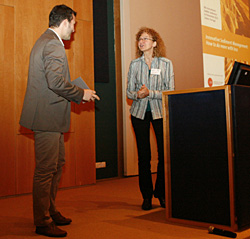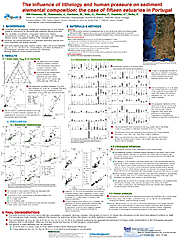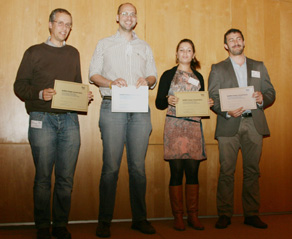8th International SedNet conference, 6-9 November 2013, Lisbon, Portugal
Innovative Sediment Management:
How to do more with less
Hosted and co-organised by LNEC

Sediment management has proven to be a significant issue in European rivers, estuaries and coastal areas. This has both a quantity and a quality aspect, as prior SedNet activities have clearly shown.
Human interventions, such as river regulation, dredging, coastal and port construction and soil degradation often have large impacts on sediment supply, sediment transport and river and coastal morphology. Sediment-starved systems, particularly in coastal, lowland areas, are more vulnerable to extreme events, putting people, infrastructure and natural capital at risk. Mitigation measures may be technically feasible, but are quickly becoming too costly.
Sediment and biota in river systems have been exposed to multiple and interacting stressors for decades or even centuries. Europe has responded to the most apparent contaminants and pressures with a range of policies and measures since the 1970s. Clear improvements in water quality can be attributed to integrated river basin action plans and to the Programmes of Measures that resulted from the major and coordinated effort of the Water Framework Directive. However, improvements in sediment and longer-lived or bottom feeding biota lag behind due to storage and accumulation of contaminants, costly and laborious monitoring techniques, and sometimes lack of sufficient legal integration of sediment management into legislation.
To sustainably manage sediments, innovative and cost-efficient approaches and solutions are needed. Sediment management, which tends to be focused only on the apparent areas of concern, comes with the challenge of avoiding measures which have only short-term and locally positive effects, whilst having unforeseen negative consequences elsewhere.
Against this background SedNet organised its 8th international conference in Lisbon. Given the tremendous diversity of Europe’s southwest coast, Lisbon proved to be a highly appropriate venue for a conference that paid special attention to estuarine and coastal sediment management.
More than 170 delegates of 25 countries participated in the event. See theList of participants.
Working Group initiatives
Thursday 7 November afternoon provided the opportunity for new initiatives – brought forward by the network – on sediment research and management. These Working Group meetings could focus on any topic in the field of sediment research and sediment management. Any conference participant who would like to brainstorm with his fellow-sediment-specialists was given the possibility to organise such a Working Group meeting. Those meetings were open for any conference participant to join and thus contribute to the discussion.
Seven ideas for Working Groups were launched, of which three effectively held a WG-meeting.
The outcome of the Working Group meetings were presented briefly in the plenary session at the end of the conference.
The most promising Working Group initiatives may get some support from SedNet to kick-off the execution of activities that they propose. A procedure how to continue with WG’s is under construction by the SedNet Steering Group and is expected to be ready early 2014.
Posters
During the conference 64 posters were presented. The conference delegates voted for the best poster. The winning poster was “The influence of lithology and human pressure on sediment elemental composition: the case of nine estuaries in Portugal”, by Mário Mil-Homens from IPMA – the Portuguese Institute of Sea and Atmosphere.


A shared second prize was for the following four posters:
• “Granular and chemical characterization of harbor sediments: Impact of particle separation and organic pollution assessment”, by Fanny Coulon, Ecole des Mines d’Alès, France
• “A new disposal strategy in the Scheldt-estuary: The concept and the preliminary monitoring results”, by Yves Plancke from Flanders Hydraulics, Belgium
• “Chemical analyses of dredge disposal sites at the Belgian Continental Shelf”, by Bavo De Witte, ILVO, Belgium
• “A minimal characterization identification approach for pre-selecting dam fine sediments reuse options”, by Baptiste Anger, EDF R&D – UMR CNRS 6143 – M2C Caen, France.


